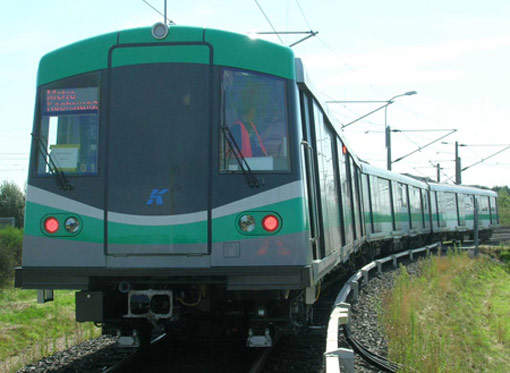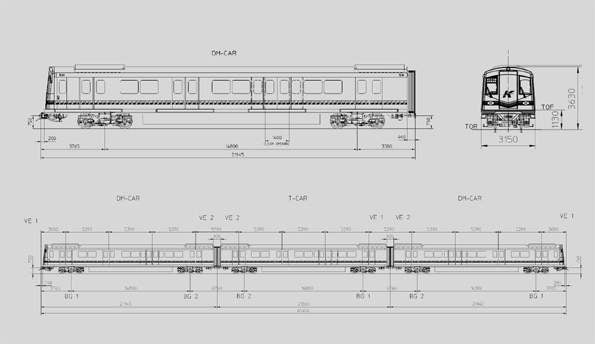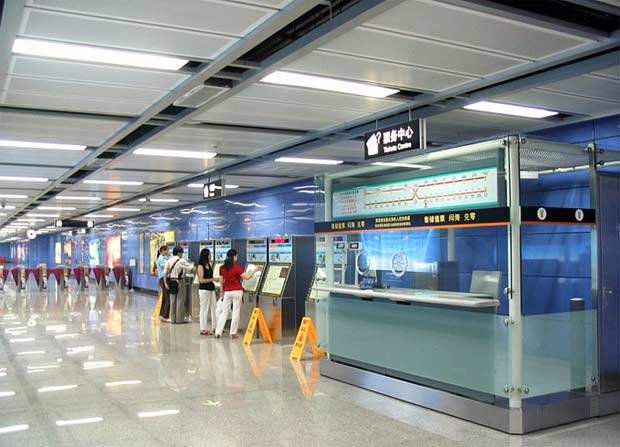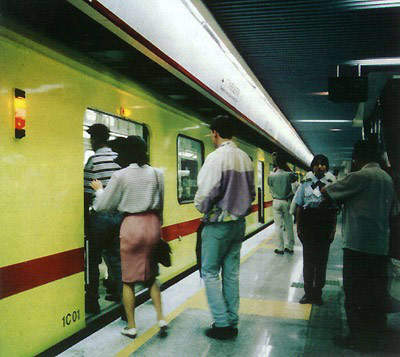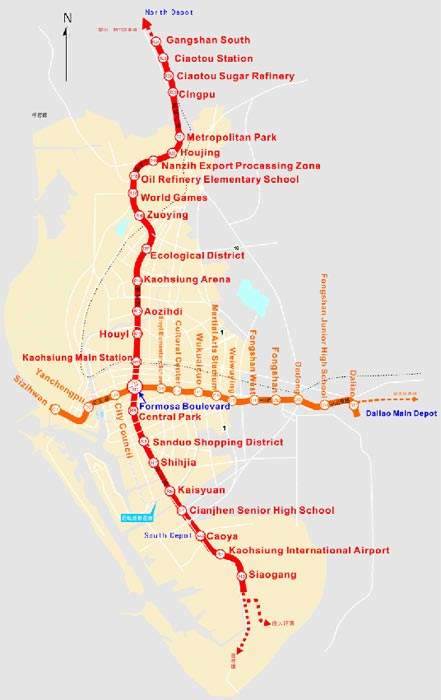Kaohsiung Metro is a mass rapid transit system in Kaohsiung, Taiwan’s second-largest city. In an effort to reduce the heavy reliance on road transport within its city centre, the Kaohsiung Rapid Transit Corporation (KRTC) has developed a 42.7km network of two lines, which is the first stage of a much larger system.
Massive and unprecedented population growth in Kaohsiung, a major industrial and port centre situated on the south coast of Taiwan, has driven the need for a high-capacity metro in an area, which is now home to three million people.
The $7bn project received 90% funding from central government.
Kaohsiung Metro construction
Construction on the project started in 2001. The two lines, Red and Orange, comprise 37 stations with an interchange at Formosa Boulevard. The project management and assistance services were provided by Systra.
The Red Line was opened on 9 March 2008 and the Orange Line was opened on 14 September 2008. Kaohsiung Metro is being operated by KRTC under a build operate and transfer (BoT) contract. The BoT was signed between KRTC and Kaohsiung City Government.
KRTC’s was originally intended for a 2007 opening date, which was two years later than the very first estimates for its completion. The entire system features automatic operation, without any need for drivers.
A circular light rail transit line is also being constructed in two phases. It is the world’s first rail system to run on a completely catenary-free route. Construction of the first phase began in 2013 and is scheduled for completion in 2015.
Line routes of Kaohsiung Metro
The Red Line runs north-south and connects 23 underground stations, one elevated station and two depots. Siaogang and Chiaotou are its terminals. The total length of the line is 28.3km, with 19.8km underground and 8.5km elevated. The line originates in Siaogang at the intersection of Yanhai and Hanmin Roads. It then passes along Jungshan, Kaohsiung City, Boai Road and ends at Chiaotou.
The Orange Line is 14.4km long, running along the east-west axis. It connects 14 stations and a main depot. Hsitzuwan and Daliao are its terminals. It originates at Hsitzuwan on the west and passes through Jungjeng Road, Fengshan City, Taliao and ends at Daliao in Kaohsiung County on the east.
The two lines together make up the 42.7km-long metro line, with 80.1% underground and 19.9% elevated.
The circular line begins at the intersection of Yixin 1st Road and Kaixuan 3rd Road, heading around the downtown area, crossing over Love River and joining the western trunk of the Taiwan Railway Administration, forming a loop. The route will have a length of 22.1km and 36 stations.
Infrastructure of Kaohsiung
The Kaohsiung Metro uses a standard 1,435mm gauge track laid with UIC 60 rail and elastic supporting system to absorb vibrations and therefore reduce the noise of trains. The railway is designed for a maximum operational speed of 90km/h (56mph), yet trains have a maximum speed of 80km/h (50mph). At depots, the design speed is a maximum of 35km/h (22mph), although trains are limited to run at 25km/h in this area.
In order to build the system below ground, two tunnelling methods were used. Cut-and-cover tunnelling, requiring the site to be fully excavated first for structures to be built, was used for 28 underground stations and 17 sections of the running line. There were two open-air sections, where conditions were not satisfactory for tunnelling.
The second method employed was shield tunnelling, where a machine had to cut through the ground and used pre-cast concrete lining segments 1.2m wide to form the tunnel walls. This minimised disruption to ground level traffic, with a total of 32 sections, the equivalent of 22.8km of the entire route, being built this way.
An independent power supply with substations provides the 750V DC current, which is collected by trains from a live third rail.
Red Line provided a high-capacity link to the International Airport, and Kaohsiung’s main railway station. There are 24 stations on this 28.3km route, 15 underground, eight elevated and one at ground level. Two depots, one at each end of the line, provide maintenance facilities for the trains. Orange Line is 14.4km long and has 14 stations, only one of them at ground level and the rest are underground.
A six-minute service frequency is provided at peak periods, ten minutes at other times. Trains will travel at an average of 38.56km/h (24mph) on Red Line and 35.1km/h (22mph) on Orange Line.
Rolling stock
Siemens Transportation won the contract to supply rolling stock for Kaohsiung, together with the power supply and signalling system in an inclusive €363m deal.
A total of 42 three-car trains, with bodies of stainless steel, were built for the first two lines, and their maximum design speed is 80km/h (50mph). Each train has seats for 132 passengers, but the large standing area increases the total capacity to 860. Automatic operation makes the system safe and reliable.
All vehicles are equipped with air-conditioning, with provision for mobility-impaired passengers. The public address system and information displays are in Mandarin, Taiwanese and English to assist tourist visitors to the city.
Construcciones y Auxiliar de Ferrocarriles (CAF) in consortium with Taiwan’s Evergreen Construction signed a turnkey contract in 2013 to build the first phase of the circular line spanning 8.6km long. CAF will provide nine Urbos LRVs with ACR catenary-free system, bidirectional features and four doors per side. The contractual scope also includes project management, supply of signalling system, electrification, ticketing system and the integration of all subsystems.
Signalling and communications of Kaohsiung rail transit system
Platform screen doors are built into 28 underground stations to meet the highest standards of safety.
The main truck communications, supplied by Siemens, will use fibre-optic circuits, and all visual, sound and date signals will be transmitted using this method. Communication systems include public address, radio, CCTV, telephones, e-mail, fax and passenger information displays.
Automatic fare collection systems installed at all stations feature central processing, while ticket gates are a secure means of revenue protection.
The future
Further expansions of the Red and Orange lines are planned, along with a further two new lines known as Blue and Brown Lines. With the line extension for Talao, Pingtung and Kangshang area, these will form the second stage of Phase 1. In addition, seven main lines and six extensions are in the planning stage to create an efficient transportation network for Greater Kaohsiung.

